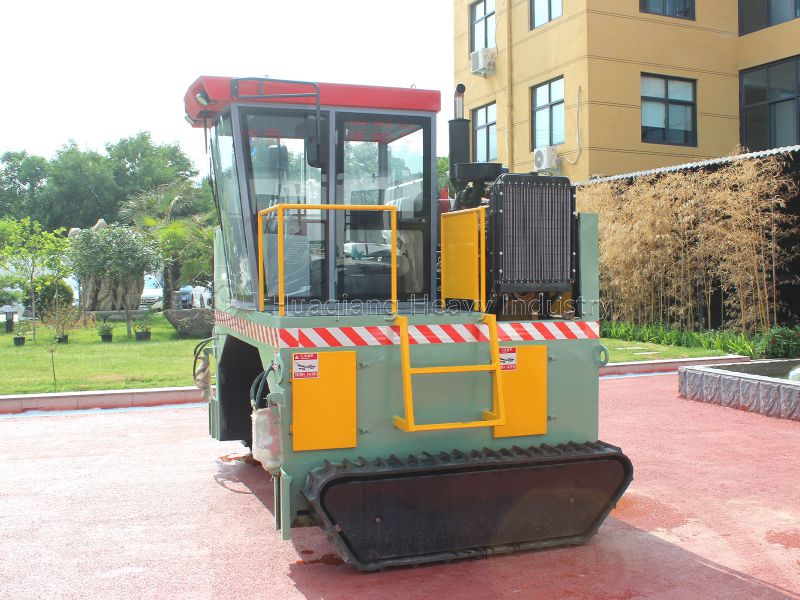Operating considerations for windrow compost turning machines in production
In organic fertilizer production, the windrow compost turning machine is the core equipment for compost fermentation. How well you use it directly affects fermentation efficiency and fertilizer quality.
1.Controlling Pile Parameters
Optimal Height: Keep fermentation piles between 1.2 and 1.8 meters high. Lower piles affect temperature buildup, while higher ones lead to poor aeration during turning.
Matching Width: Pile width should match the turner’s track span (usually 2-3 meters) to avoid poorly turned edges.
2.Turning Operation Standards
Turning Frequency: Turn piles every 1-2 days in summer, and every 3-4 days in winter. This ensures even oxygen distribution.
Steady Speed: Maintain a travel speed of 5-8 meters per minute. Going too fast results in incomplete turning; too slow hurts efficiency.
Alternate Direction: Change the turning direction for each consecutive operation to prevent material piling up in one direction.

3.Key Equipment Maintenance
Blade Shaft Check: Before each use, ensure turning blades aren’t broken or loose. Replace any worn over 30% immediately.
Track Care: Regularly clean debris stuck in the tracks and adjust track tension.
Hydraulic System: Check hydraulic oil levels and hose seals monthly. Prevent leaks that cause low pressure.
4.Safety Operating Requirements
Emergency Stop: Hit the emergency stop button immediately if the windrow compost turning machine vibrates abnormally or makes strange noises. Fix the issue before restarting.
Operator Safety: Keep clear of rotating parts. Never climb on or clear blockages while it’s running.
Site Prep: Ensure the working area is level, free of standing water, and has a slope under 5° to prevent tipping.
In short, using windrow compost turning machines scientifically boosts organic fertilizer fermentation efficiency while cutting energy and labor costs.
